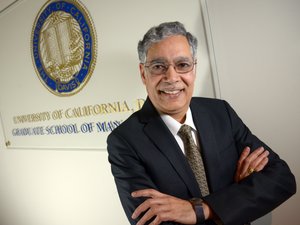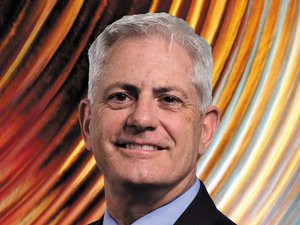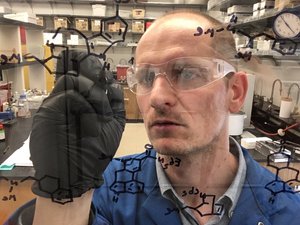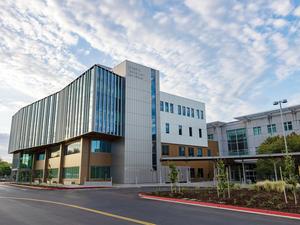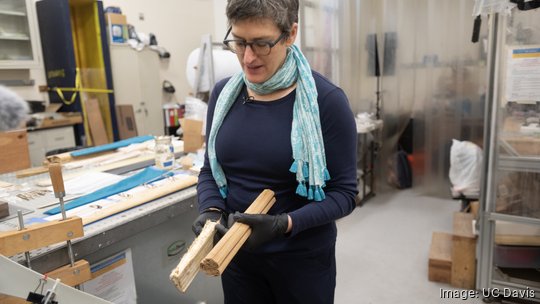
The future of wind power may be harnessed by compostable natural materials bamboo and mushroom root, in research and testing being conducted at the University of California Davis.
Modern windmill blades are made of chemical composite materials over a structure of balsa wood. That's a problem because they are difficult to recycle, and the wood is a scarce resource.
“We want to have clean energy, but clean energy cannot pollute the environment, and it can’t cause deforestation,” said Valeria La Saponara, a professor in the department of mechanical and aerospace engineering at UC Davis.
She and a team or researchers are working on prototypes of windmill blades made of woven bamboo reinforced with mycelium, the fibrous root system of mushrooms.
In laboratory testing, La Saponara's team found that multilayered composite mycelium on bamboo frames can create strong and light blade shapes.
The research effort has funding from the College of Engineering’s Next Level program and a grant from The Green Initiative Fund of UC Davis Sustainability.
Most modern turbine blades are made of carbon fiber, fiberglass, epoxy and balsa wood. The epoxy and fiber compounds are difficult to recycle, and the blades themselves are huge. Having blades that can be composted would reduce stress on landfills, and it would conserve tropical trees in the Amazon.
According to the Union of Concerned Scientists, demand for balsa wood outstripped supply in 2020.
Turbine blades have a useful lifespan of 20 to 25 years, and after that they are retired — and sent to landfills, according to UC Davis. In the U.S. alone, some 8,000 turbine blades were retired in 2021, and the average length of those blades was 200 feet, which gives the wind turbine a diameter of about 420 feet.
The prototype bamboo and mycelium blades are going to be tested at UC Davis' Solar Thermal and Energy Enhancement Laboratory on a 1-kilowatt turbine to make sure they can withstand winds up to 85 miles per hour, according to the university.
With an increasing global reliance on wind for clean electricity, UC Davis cites research that says over 2 million tons of decommissioned blades are projected to be sent to landfills by 2050 in the U.S. alone, and the global mass of retired blades may be 43 million metric tons by the same year.
The project at UC Davis aims to replace the difficult-to-recycle blades with compostable blades made mostly of biomass.
